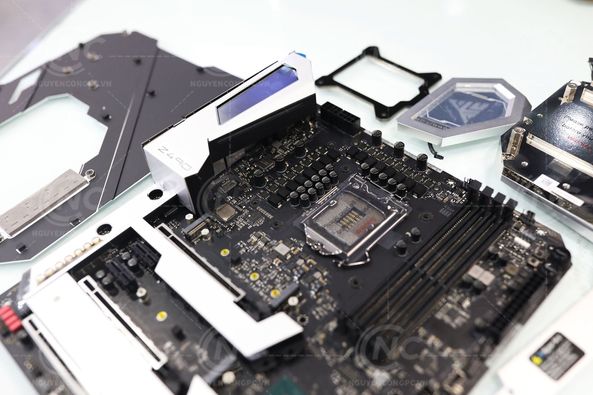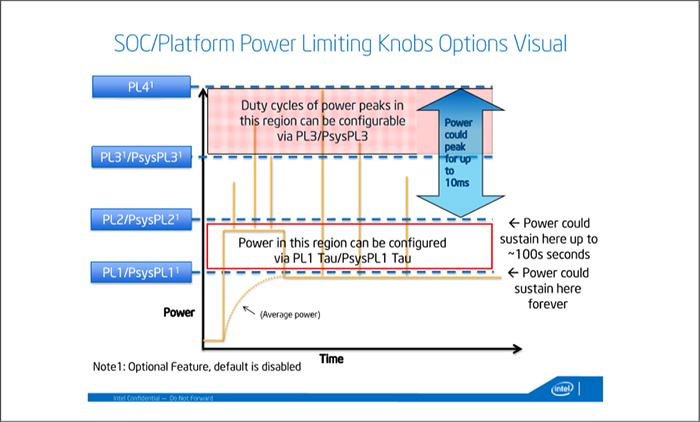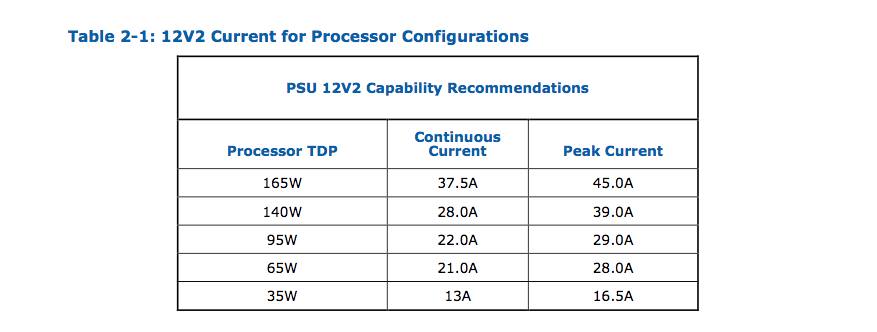
Previously, most motherboards were designed with 4-pin or 8-pin power supplies, except for some high-end motherboards that designed 8+4 pin power supplies. However, since the 9th generation of processors from Intel or AMD Zen 2 onwards, we increasingly see even in the mid-range segment, motherboards are mostly designed with 8+4 power supplies. battery and many high-end motherboards are designed with 8+8 pin or even 8+8+4 or 8+8+8 pin designs. In general, the 8 + 4pin design has become a standard for mid-range motherboards nowadays.
Although modern processors are designed around more advanced, more efficient processes, that doesn't mean the power consumption is equal or lower than older processors. The TDP or CPU Package specifications published by Intel and AMD have become increasingly misleading and inaccurate or not clearly visible to users in recent generations of processors. For example, the Intel i9 11900K processor is announced by Intel with a TDP of 125W, but it produces up to ~300W of thermal power. In the past, pushing CPUs beyond their specified TDP often required manual adjustments (overclocking), but many CPUs now automatically exceed the officially announced TDP using the use their Turbo modes. These Turbo settings are often further enhanced by many high-end series motherboards,

In theory, a motherboard with an 8pin power supply can deliver up to 336W (+- 5% of this) to a single processor. If the motherboard has an average VRM circuit, the conversion efficiency is lower in theory, for example at 85%, then the 8-pin power supply can also provide the processor with a level of 286W, ie is a level that can be said to be redundant or sufficient for Hi End processors like 9900K or even 10900K/11900K.
However, why is it possible for the 8-pin power supply in theory to be able to match the above high-end processors, but motherboard manufacturers have to design 8 + 4 pin or 8 pin power supplies? +8 batteries or more? The answer lies at the bottom of the article.
First, to reiterate the basics, Intel offers four technical variables that can be tweaked to increase the power of the processor - called Power Limit, including PL1, PL2, PL3, PL4 and Tau. In which, PL3 and PL4 are values that will not appear in the normal case, so we only need to care about PL1 and PL2 and Tau. PL1 (Power Limit 1) = TDP, these two values are often defined equally, as both steady-state and long-term power consumption and efficiency of the processors. For example i9-10900K has a TDP of 125W, then PL1 will be 125W. The PL1 value is the lowest value. PL2 (Power Limit 2) in contrast to PL1, it is short-term and only the maximum value achieved in a certain short-term of the processor. The processor will use Turbo mode up to the maximum value of PL2 specified. Therefore, PL2 value is much higher than PL1 and is usually applied according to the formula PL2 = TDP * 1.25. Tau is understood as a time variable. Means the amount of time the processor is in PL2 mode before switching to PL1 mode. Since it is a time variable, it does not depend on the temperature of the processor.

Thus, it can be understood as an Intel processor (AMD also has a similar understanding, but a little different interpretation of parameters such as PPT, EDC ...), although the manufacturer announced the TDP = PL1 level but it can reach very high PL2 values. For example i9 9900K or i7 10700K, although Intel announced the corresponding TDP value for PL1 is 125W, but when opening the power limit and running Turbo All Core 4.7GHz, its PL2 level can reach up to ~ 220W, the number of W is almost double. Either 10900K or 11900K (AVX512) can load more than 300W.
Next, the standard design specification ATX12V 2.52 part +12V2 (power supplied to the CPU) proposed by Intel in 2018 also clearly states the problem. For example, a processor with a TDP of 95W will require a continuous power rating of 22A (264W)/ and a peak power of 29A (348W). Therefore, according to the design specification requirements, motherboards with 8 pin power supplies will not be able to meet this requirement. At this time, it is imperative that the motherboard manufacturer will have to design an additional 4-pin level or play more than 8 additional batteries to meet the technical requirements. Note that the standard design specification ATX12V 2.52 only applies to the 11th generation processors, with the 12th generation Intel has changed and added a new standard with higher CPU power requirements. so many.

However, in reality, applications can load maximum performance and CPU Package level of the processor is extremely small, except for Stress software. Therefore, motherboards with 8-pin power connectors can perfectly support Hi End processors for a long time. But if you are a true gamer, want to overclock hardcore, or use processors with high TDP / large CPU Package, a motherboard with an 8-pin power supply can hardly meet the needs at this time.
Summary: The design of an additional power supply for the motherboard in addition to meeting the requirements of Intel ATX12V 2.52, it also helps to distribute power better, helping to reduce heat generated when in use, towards High end users…

